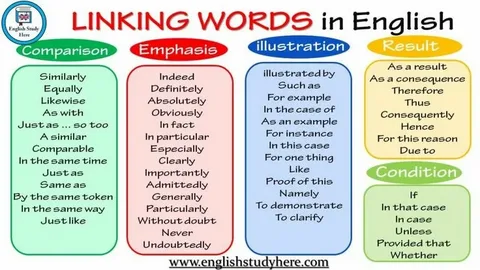Teach Conjunctions with Food: A Fun, Tasty Lesson Plan
Conjunctions can be intricate for kids to analyze.
Words like “and,” “however,” and “due to the fact” are essential; however, how can you make them exciting?
If you want children to learn and do not forget conjunctions, try using food.
Food is amusing, relatable, and arms-on. Kids can see, touch, and flavor it. Plus, when you use food to educate, children are more engaged and involved.
In this manual, I’ll display you how to use food to train conjunctions in a way that’s a laugh and noteworthy.

Outline
- Why Use Food to Teach Conjunctions?
- Keeps kids engaged
- Makes gaining knowledge of extra concrete
- Preparing for the Lesson
- Gathering substances
- Choosing safe, amusing foods
- How to Teach Conjunctions with Food: Step-by-Using
- Simple definitions and examples
- Interactive sports the usage of food
- Tips for a Successful Lesson
- Group activities
- Creating connections with children’s pastimes
- Internal Linking Opportunities
- Related sources on coaching with laughter sports
- Articles on creative approaches to teaching grammar
- FAQs on Teaching Conjunctions with Food
- Age recommendations, protection suggestions, and more
Why Use Food to Teach Conjunctions?
Teaching grammar to youngsters can be tough. It regularly feels boring or too summary. But meals? That’s some thing kids love.
By the use of food, you’re making grammar more real. Food is some thing kids apprehend and revel in. It turns a stupid topic into something they can see and experience.
Conjunctions hyperlink thoughts collectively, like:
- “I like apples and oranges.”
- “I need to play out of doors, but it’s raining.”
Using food, youngsters can create sentences they recognize. It also makes mastering experience much less like paintings and extra like play. And when getting to know is a laugh, it sticks higher.
Preparing for the Lesson
Before beginning, acquire what you need.
What You’ll Need
- Snack Foods: Think about small snacks like crackers, fruit, candy, or veggies. Make sure they’re easy to handle and not messy.
- Conjunction Cards: Write common conjunctions like “and,” “however,” “or,” and “because” on playing cards. These will assist you in guiding the lesson.
- Whiteboard or Large Paper: Useful for writing examples or drawing connections.
Picking the Right Food
Pick meals, which can be:
- Small: Bite-sized snacks are clean to skip round and hold matters neat.
- Colorful: Variety makes it simpler to make thrilling sentences. For example, pink apples and green grapes can display selections.
Make certain to check for any food allergies. Kids’ protection is constantly the pinnacle precedence. You can ask mother and father ahead of time to avoid any troubles.
How to Teach Conjunctions with Food: Step-by-Step
Here’s a step-by-step manual to using food on your conjunction lesson. Let’s make it easy and fun.

Step 1: Start with Simple Definitions
Begin through explaining what conjunctions are. Keep it simple:
Conjunctions are phrases that connect ideas.
Some not unusual conjunctions are “and,” “but,” “or,” and “because.” Use examples with simple sentences children can recognize.
Step 2: Use Food to Show Examples
Now, convey out the snacks and display how conjunctions paintings.
Example Sentences
- “I need cookies and milk for a snack.”
- “I like popcorn, but I don’t like soda.”
- “You can choose apples or grapes.”
- “I can’t have candy due to the fact I already had dessert.”
For every sentence, display the snacks as you are saying the phrases. Kids can see the meal items and apprehend how the conjunctions hyperlink them.
Step 3: Get Kids Involved
Let the youngsters create their personal sentences about the usage of meals. Give them a few snacks and conjunction cards. Then, ask them to make sentences approximately what they prefer.
Some thoughts include:
- Choosing Foods: “I want crackers or chips.”
- Combining Items: “I like each strawberries and blueberries.”
- Explaining Choices: “I can’t devour nuts due to the fact I’m allergic.”
Let them take turns sharing their sentences with elegance. This manner, they could examine from each different.
Step four: Group Activity: Food Sentences
Divide the elegance into small corporations and supply every group a hard and fast of snacks and conjunction playing cards.
Ask them to create as many sentences as they could using their snacks. After a few minutes, have each institution percentage some of their sentences with anybody.
This makes getting to know each other collaborative and a laugh. Plus, kids regularly revel in getting to know from their friends.
Step five: Write Down and Draw Sentences
Some kids analyze higher through seeing matters written down. Have some sentences from the hobby written at the board or paper.
Draw simple photos to show the sentences if viable. For example, if they are saying, “I want a banana and an apple,” draw a banana and an apple with the phrase “and” between them.
This makes it easier for visually inexperienced persons to understand.
Tips for a Successful Lesson

To keep kids engaged, try these greater hints:
1. Make It a Game
Set a timer and see what number of sentences each institution can make in a hard and fast amount of time. This provides a touch of pleasant opposition, which youngsters typically love.
2. Connect to Their Interests
Ask kids what ingredients they like. This enables them to sense extra involved. If a toddler loves pizza, you could say, “You like pizza and ice cream.” This way, they experience the lesson is ready for them.
3. Keep It Simple
Avoid complex words or grammar guidelines. Focus on making the hobby fun and smooth to apprehend. Stick to fundamental conjunctions for this lesson: “and,” “however,” “or,” and “because.”
FAQs on Teaching Conjunctions with Food
Q: What age institution is that this lesson fine for?
A: This lesson is brilliant for children aged 7 to 10. They’re old enough to start understanding grammar fundamentals but nevertheless younger enough to revel in gaining knowledge through play.
Q: What if a few youngsters have meal allergies?
A: Always take a look at with dad and mom earlier than bringing snacks into the study room. If hypersensitive reactions are a challenge, bear in mind the use of non-food items, like small toys or playing cards.
Q: How can I examine in the event that they’ve found out the conjunctions?
A: After the pastime, give kids a worksheet with simple sentences lacking conjunctions. Ask them to fill in the blanks. This indicates if they understood the lesson.
Q: Can I use this technique with older youngsters?
A: Definitely! You would possibly simply need to tweak the snacks or examples to be extra age-appropriate. For older children, you can use more superior conjunctions or maybe terms.
Using food to train conjunctions is a creative way to make grammar training fun.
You’re now not simply teaching phrases; you’re giving youngsters a memorable revel in.
Next time you’re planning a lesson, attempt the usage of snacks to hook up with your college students. It’s a delectable manner to research.
Conclusion
Teaching in conjunction with food makes grammar training enticing, memorable, and delicious. By using snacks, youngsters can see and feel how conjunctions link thoughts together in a fingers-on way. It turns a summary idea into something concrete, which facilitates youngsters taking into account what they have discovered.
So, next time you’re confronted with the undertaking of teaching conjunctions, bypass the worksheets and attain a few snacks alternatively. Not most effective will your college students enjoy it, but they’ll even have an amusing learning experience they won’t quickly neglect.




